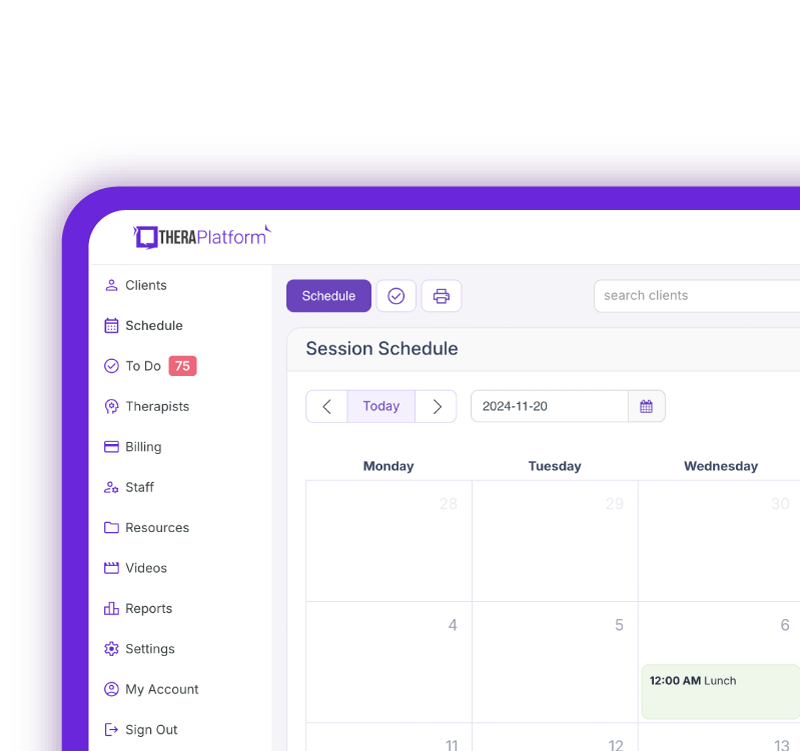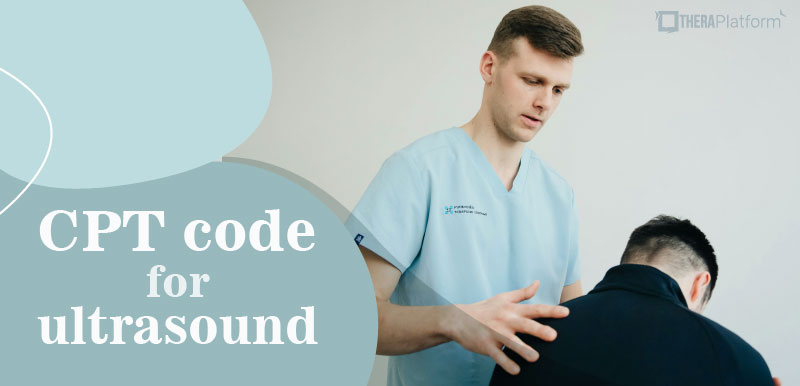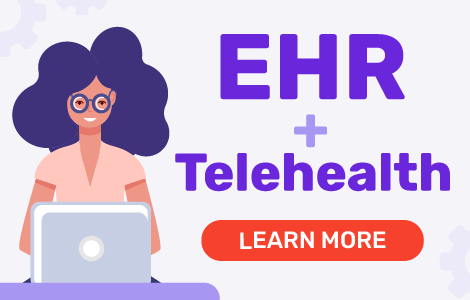CPT code 97014

97014 CPT code or G0283? If you use electrical stimulation or E-stim, a modality that can be used in different settings including sports therapy, wound care, post-surgical rehab, neurologic rehab, pain medicine and more, you may be asking yourself this question. Let’s first understand E-stim as a modality, which continues to be a regular part of many therapists’ practice.
Summary
- 97014 CPT code should not be used for unattended electrical stimulation for Medicare and many commercial insurance providers; instead, the HCPCS code G0283 should be used.
- CPT codes describe medical services and procedures, while HCPCS codes, like G0283, are primarily used for Medicare claims and services not included in CPT codes. Enrolling in an insurance billing course for therapists can help providers enhance their knowledge.
- Proper documentation, including treatment type, area, and medical necessity, is essential for reimbursement, with Medicare requiring supportive documentation at least every 10 visits. Using an EHR like TheraPlatform can help therapists with efficient billing.
→ Click here to enroll in our free on-demand Insurance Billing for Therapists video course [Enroll Now]
E-stim is administered via a device that sends electrical impulses through the skin to the sensory and motor nerves in the skin, fascia and muscles.
E-stim can have the following effects:
- Decreased pain
- Promotion of healing
- Muscle re-education and strengthening
- Increased range of motion
- Increased circulation
- Reduced edema
- Decreased inflammation
- Decreased spasticity
- Improved overall function
The most common electrical stimulation applications include TENS, NMES or FES, interferential, Russian stim, iontophoresis, dry needling with electrical stimulation and electrical stimulation for wound care. Each has unique physiological effects, indications, precautions and contraindications. It is important to review these before prescribing this treatment to your patients.
Streamline your insurance billing with One EHR
- Claim batching
- Auto claims
- Automated EOB & ERA
- Real-time claim validation
- Real-time claim tracking
- Aging and other reports

As with all the treatments you provide your patient, documentation and billing for modalities is an essential part of best practice and timely reimbursement. While billing for many timed services is quite straightforward, billing for modalities can be a bit more complicated and billing for electrical stimulation, especially unattended, is no exception.
A quick search for the billing code for unattended electrical stimulation may lead you to the 97014 CPT code –unattended electrical stimulation, one or more areas, but let’s be clear, you should not bill 97014 CPT code for unattended electrical stimulation for Medicare insurance and many other commercial insurances.
This code is no longer a Medicare-recognized code nor is it recognized by many commercial insurance providers. Instead, the code for unattended electrical stimulation is not a CPT code but an HCPCS code G0283.
Note: The code G0281 replaces 97014 CPT code when it applies to the treatment of wounds which will not be the subject of this article.
Watch this video to learn common insurance billing struggles and solutions
→ Start My Free Trial
→ Start My Free Trial
If you don’t read any more of this article than the first two paragraphs, you should know that it is important to check the policies of any non-Medicare or Medicaid plan to determine if you should bill 97014 CPT code or G0283. This is the first step to minimizing claim denials.
Additionally, in either case, it is considered a supervised code which means that the therapist needs to be in the vicinity supervising the treatment but does not need to be in direct contact with the patient the entire time.
For those readers along for the entire ride, you may be wondering what the difference is between a CPT code and an HCPCS code. HCPCS stands for Healthcare Common Procedure Coding System. It is a standardized coding system that helps Medicare process claims. Level I HCPCS codes are CPT codes maintained by the American Medical Association.
The term CPT stands for Current Procedural Terminology. These codes were developed to provide a uniform language of coding for medical services and procedures that can be used across all medical providers. As physical therapists, you utilize CPT codes to describe the services rendered during a patient encounter. Codes are then submitted via a claim to a third-party payer who will use this information to approve or deny payment for said claim.
Practice Management + EHR + Telehealth
Mange more in less time in your practice with TheraPlatform

.
All CPT codes are five digits and are either numeric or alphanumeric. In general, most of the codes used by physical therapists fall under the 97000 series called Physical Medicine and Rehabilitation, however, a PT can use any CPT code as long as the service described falls under the physical therapy scope of practice defined by your state licensure laws.
Level II HCPCS codes are “used primarily to identify products, supplies, and services not included in the CPT® codes, such as ambulance services or durable medical equipment, prosthetics, orthotics, and supplies (DMEPOS) when used outside a physician's office” (HCPCS - General Information | CMS, n.d.). HCPCS codes consist of a single alphabetical letter followed by 4 numeric digits.
Unattended electrical stimulation code G0283 falls under this Level II category.
There are many things to consider before billing G0283. Read below to familiarize yourself with Medicare’s requirements for using G0283.
- To bill unattended electrical stimulation, it should be part of a therapy plan of care
- Most non-wound care electrical stimulation treatment provided in therapy should be billed as G0283 as it is often provided in a supervised manner (after skilled application by the qualified professional/auxiliary personnel) without constant, direct contact required throughout the treatment.
What is the difference between 97014 CPT code and 97032?
Constant attendance electrical stimulation (CPT 97032) is a different code and should only be reported under specific circumstances:
- Requires constant and direct 1:1 manual patient contact by the qualified professional/auxiliary personnel
- Practitioners should clearly describe the type of electrical stimulation provided, as well as the medical necessity of the constant contact to justify billing 97032 versus G0283
- Can include pelvic floor e-stim, direct motor point stimulation delivered via a probe, instruction in home TENS unit (1-2 visits only)
Note: See this link for more specific case scenarios and instructions
- Do not bill 97032 when providing E-stim to a patient requiring constant attendance only for safety reasons due to cognitive deficits. This type of monitoring may be done by non-skilled personnel.
- Functional Electrical Stimulation (FES) or Neuromuscular Electrical Stimulation (NMES) while performing a therapeutic exercise or functional activity may be billed as 97032. Do not bill for CPT codes 97110, 97112, 97116 or 97530 for the same time period.
- Ultrasound with electrical stimulation provided concurrently (e.g., Medcosound, Rich-Mar devices), should be billed as ultrasound (97035). Do not bill for both ultrasound and electrical stimulation for the same time period.
- G0283 is restricted to no more than 1 untimed unit of this code per day per discipline. Additional units will be denied.
- The cost of the electrodes is included in the practice expense portion of HCPCS code G0283. Neither the patient nor Medicare should be billed for the cost of the electrodes.
Supportive documentation, as always, is required when billing for unattended electrical stimulation. In this case, Medicare requires supportive documentation at least every 10 visits.
In this supportive documentation, you should outline the type of electrical stimulation you are using, the area being treated, and the reason you are using it. If electrical stimulation is being used to treat pain, make sure to outline the patient’s pain rating, the location of pain and the effect of this pain on their function.
Additionally, documentation must clearly support the use of electrical stimulation as adjunctive therapy or for muscle retraining over more than 12 visits.
In review, electrical stimulation can be an important addition to a physical therapy plan of care to treat pain, re-educate muscles, facilitate wound healing and more.
Most applications of electrical stimulation are considered unattended though exceptions due exist and it is important to review these exceptions before billing for attended E-stim.
The 97014 CPT code is no longer a Medicare-recognized code and has been replaced by the code G0283. Many but not necessarily all non-medicare insurance providers have adopted this rule as well so it is important to review the coding policies of each plan.
When used correctly, you can and should receive payment for the appropriate use of electrical stimulation. This modality has an important place in many physical therapy plans of care and when used appropriately, can help your patients heal faster.
How EHR and practice management software can save physical therapists time with insurance billing for therapists
EHRs with integrated billing software and clearing houses, such as TheraPlatform, offer physical therapists significant advantages in creating an efficient insurance billing process. The key is minimizing the amount of time dedicated to developing, sending, and tracking medical claims through features such as automation and batching.
What are automation and batching?
- Automation refers to setting up software to perform tasks with limited human interaction.
- Batching or performing administrative tasks in blocks of time at once allows you to perform a task from a single entry point with less clicking.
Which billing and medical claim tasks can be automated and batched through billing software?
- Invoices: Create multiple invoices for multiple clients with a click or two of a button or set up auto-invoice creation, and the software will automatically create invoices for you at the preferred time. You can even have the system automatically send invoices to your clients.
- Credit card processing: Charge multiple clients with a click of a button or set up auto credit card billing, and the billing software will automatically charge the card (easier than swiping!)
- Email payment reminders: Never manually send another reminder email for payment again, or skip this altogether by enabling auto credit card charges.
- Automated claim creation and submission: Batch multiple claims with one button click or turn auto claim creation and submission on.
- Live claim validation: The system reviews each claim to catch any human errors before submission, saving you time and reducing rejected claims.
- Automated payment posting: Streamline posting procedures for paid medical claims with ERA. When insurance offers ERA, all their payments will post automatically on TheraPlatform's EHR.
- Tracking: Track payment and profits, including aging invoices, overdue invoices, transactions, billed services, service providers.
Utilizing billing software integrated with an EHR and practice management software can make storing and sharing billing and insurance easy and save providers time when it comes to insurance billing for therapists.
Streamline your practice with One EHR
- Scheduling
- Flexible notes
- Template library
- Billing & payments
- Insurance claims
- Client portal
- Telehealth
- E-fax

Resources
TheraPlatform is an all-in-one EHR, practice management, and teletherapy software built for therapists to help them save time on admin tasks. It offers a 30-day risk-free trial with no credit card required and supports different industries and sizes of practices, including physical therapists in group and solo practices.
More resources
- Therapy resources and worksheets
- Therapy private practice courses
- Ultimate teletherapy ebook
- The Ultimate Insurance Billing Guide for Therapists
- The Ultimate Guide to Starting a Private Therapy Practice
- Mental health credentialing
- Insurance billing 101
- Practice management tools
- Behavioral Health tools
Free video classes
- Free on-demand insurance billing for therapist course
- Free mini video lessons to enhance your private practice
- 9 Admin tasks to automate in your private practice
References
Article - Billing and Coding: Outpatient Physical and Occupational Therapy Services (A56566). (n.d.). https://www.cms.gov https://www.cms.gov/medicare-coverage-database/view/article.aspx?articleId=56566
HCPCS - General Information | CMS. (n.d.). https://www.cms.gov https://www.cms.gov/medicare/coding-billing/healthcare-common-procedure-system



